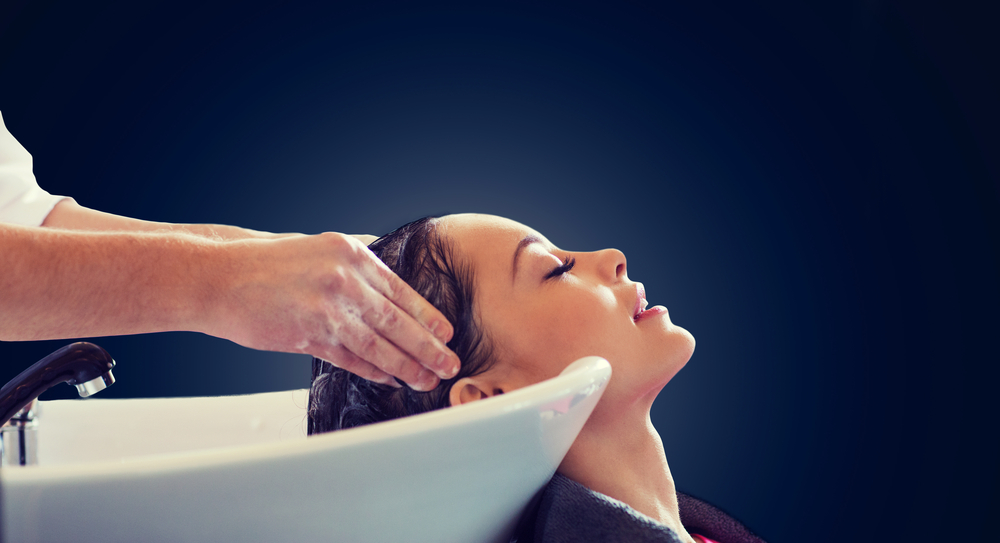On-Demand Beauty Service Apps Have A Fundamental Problem
In 2011, Vogue contributing editor Lauren Santo Domingo—a bottled-water heiress and billionaire by marriage—told Glossier’s beauty blog Into The Gloss the most glamorous thing I had ever heard: She does not wash her own hair.
“I can’t even remember the last time I washed my own hair—I have Avalon Organics shampoo and conditioner,” said Santo Domingo, co-founder of the luxury e-commerce brand Moda Operandi. “I’ve probably blown dry my own hair three or four times? I’m just bad at it and I don’t feel like learning, when there are such good hair stylists in New York.”
Of course, if your homes include an eighteenth-century Haussmann duplex in Paris and a New York City townhouse on Gramercy Park, your hair stylists are probably happy to make the house calls, setting up shop in your palatial bathrooms and dressing rooms.
Santo Domingo is the kind of consumer that her entrepreneurial socialite peers, Hannah Bronfman and Lauren Remington-Platt, probably had in mind when they started their beauty-on-demand apps for bringing hair stylists, makeup artists, and manicurists to the comfort of your home. In 2011, Remington-Platt founded Vênsette, which offered premium beauty services for affluent customers like herself. A regular blowout costs $100—that’s twice what you’d pay at your local salon. Bronfman founded Beautified in 2013, as a “new way to book last minute beauty & wellness appointments.” Amid exuberance about the on-demand economy in 2015, the market leader, Glamsquad, raised $15 million in venture capital funding. For $50, Glamsquad will send a pro hair stylist will come to your home or office space and give you a blowout.
This may seem counterintuitive if you, like me, prefer to go to the salon where there is proper space and equipment for hair styling—not to mention the perk of a complimentary glass of champagne, as Drybar offers. But like many tech founders, Bronfman and Remington-Platt were solving a problem that they encounter in their daily lives. And like many tech founders, their daily lives were out of touch. This fundamental disconnect may be why there are signs that the sector is losing steam.
Investors have already cooled off in the on-demand beauty app space, Rachel Strugatz reported in WWD. Vênsette has pivoted to corporate clients, and Beautified shut down in 2015. Brick-and-mortar beauty salons aren’t going to be superseded by the on-demand economy anytime soon, Clara Sieg, a partner at Revolution Ventures, told WWD.
“People thought this industry would shift completely online and you would have this incredible on-demand labor force, but in reality, there’s a small segment that will go for that level of convenience where it’s not an experience,” Seig said. “For most people, a blowout is a luxury—it’s a treat and not a regular occurrence, so the idea of adding convenience to it isn’t a huge appeal.” She also pointed out that at a lower price point like Glamsquad’s, the need for stylists to travel to clients throughout the day reduces the number of appointments they can take in a day—quickly making the model unsustainable for higher-end professionals.
I’ve used Glamsquad twice. Both times, I requested the service to my co-working space, The Wing, which has a “beauty room” dedicated to primping. (My crumbling studio apartment lacks palatial bathrooms.) But even in an Instagram-friendly space like The Wing, I missed one of the more luxurious reasons to get a blowout: getting someone else to wash your hair and give you a head massage. Glamsquad asks that you wash your hair yourself so that it is damp and clean when they arrive. (Not even Santo Domingo would agree to that.)
Even on-demand hair apps for textured hair, such as Atlanta-based Colour, are having trouble convincing investors that there is profit to be made in the market, despite the fact that black consumers spent almost $3 billion on hair care products in 2016. The idea behind Colour is that since not every stylist knows how to work with black women’s hair, and the processes can be time-consuming, the app brings an experienced hair stylist to your home. Box braids, for example, can take up to eight hours—wouldn’t you rather sit in the comfort of your home?
But even Colour faces a similar dilemma to its less-specialized peers. Put simply: 1) Going to the salon is a special occasion for most people. 2) Not everyone has a home equipped for inviting hair professionals to set up shop. 3) The relationship that you have with your trusted hair stylist supersedes convenience. People will travel long distances to see their hair guru. Even the New York-based Glossier CEO Emily Weiss, who could certainly afford to order in a hair stylist, would go all the way to Copenhagen, Denmark to get her hair cut.

